50+ Direct Mail Statistics You Don’t Want To Ignore
Here are our 50+ direct mail statistics that describe what’s been going on thus far since 2020, how customers interact with their mail, and why companies use direct mail.

Direct mail is one of the oldest forms of communication. When I say “direct mail” I'm referring to physical documents like postcards, letters, brochures, flyers, and magazines sent to a consumer’s mailbox.
You may think that direct mail takes a considerable amount of effort. Is it worth spending the time and money on something that isn’t engaging anymore?
First, yes it’s worth spending time on. And second, direct mail is still an engaging and useful tool many companies currently use to interact with customers.

The world used to think that direct mail was ineffective because…
- It took too much time
- It was exhaustive
- It wasn’t instantaneous
However, new technology allows companies like yours to effectively use direct mail without the problems of the past.
Direct mail is more important now than ever because of its effectiveness. Just take a look at the direct mail statistics below describing what’s been going on thus far since 2020, how customers interact with their mail, and why companies use direct mail.
Direct Mail Statistics of the 2020s
As people living in the modern world, our teachers taught us that we’re in “the digital era”. Our revolve around screens so marketers use TV, social media, emails, and other digital tools to communicate with their target audience.
There’s nothing wrong with using digital communication channels to talk to your customers. However, since the pandemic, some people are experiencing digital fatigue. They want to build connections and consume content that doesn’t involve staring at a screen.
This is why receiving a piece of physical mail is still appealing despite how much digital media people consume. A piece of mail in the mailbox offers a tangible, real-life connection the public desires as a reprieve from screens.
Additionally, marketers can avoid overcrowded websites and email boxes with thousands of unopened emails. Brands and businesses can stand out and see real results by engaging people when they come home.
With all of that said, is direct mail still relevant in 2022? The answer is yes.
Below are some direct mail statistics explaining the situation in the 2020s.
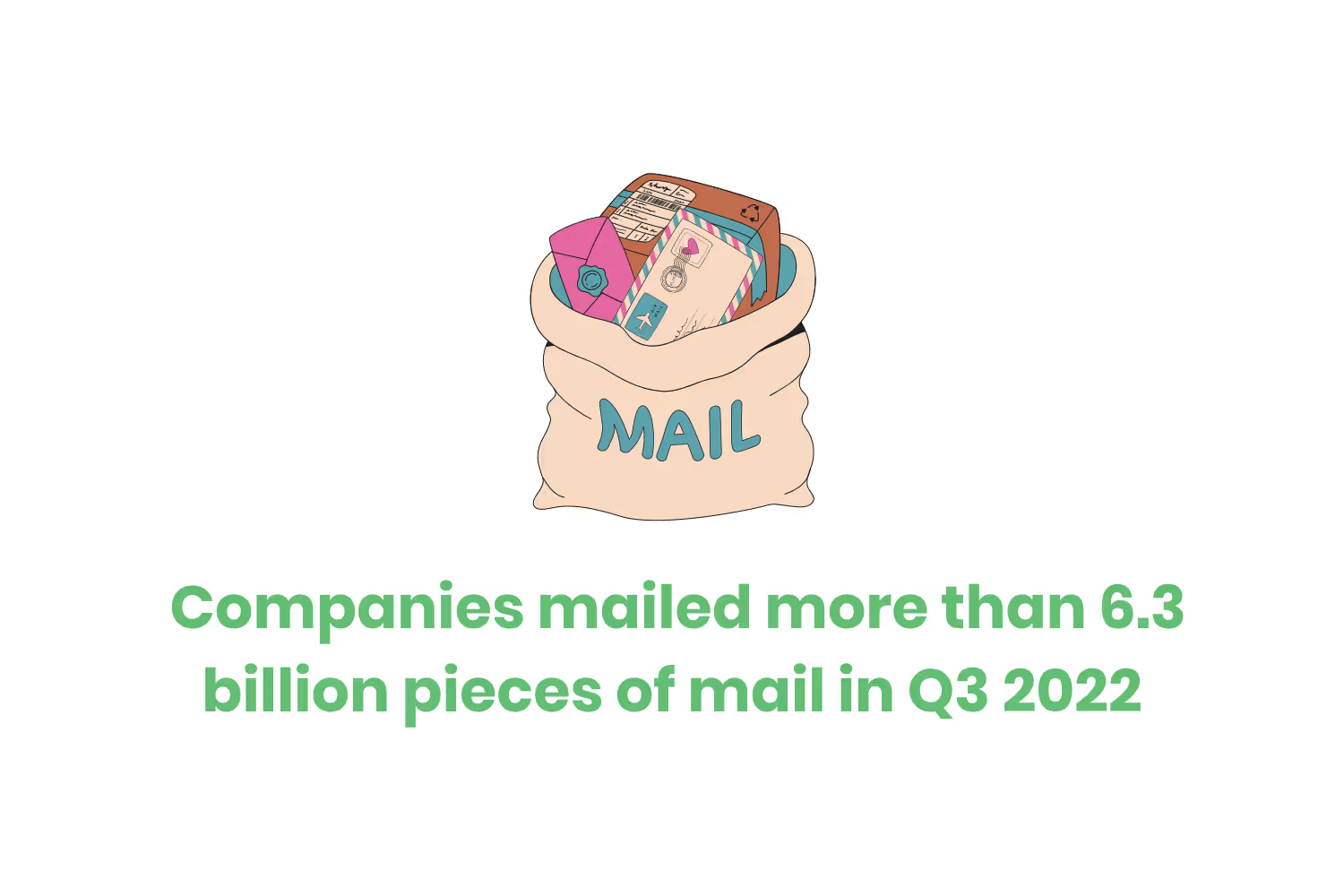
- People toss 90% of direct mail without opening or reading it. (Report Linker)
- Direct marketers mailed more than 6.3 billion pieces of mail in Q3 2022. (Sequel Response)
- The world expected the global direct mail advertising market to grow from $71.57 billion in 2021 to $72.67 billion in 2022. (Report Linker)
- They expected it to grow at a compound annual growth rate (CAGR) of 1.5%.
- At the end of Q3, there were 25.9 billion pieces of mail sent in 2022. (Sequel Response)
- This is 3.4% more than volumes in 2021 for the same period.
- The volume of mail decreased by 36% in Q3 2022 compared to Q2 2022. (Sequel Response)
- The volume of mail decreased by 28% in Q3 2022 compared to Q3 2021.
- 57% of companies use postcards as forms of direct mail. (Marketing Charts)
- Postcards were the most frequently used form of mail in 2020.
- 51% use letters, 39% use dimensional direct mail, and 35% use oversized postcards.
- Oversized letters are the least used form of direct mail. (Marketing Charts)
- 13% of brands use oversized letters.
- QR codes are twice as popular in 2022 compared to 2021. (Sequel Response)
- 16% of postage had QR codes specifically in Q3 2022.
- 88% of brands report that dimensional mail is the best at representing them. (Marketing Charts)
- 80% say oversized postcards represent brands well.
- 78% say postcards represent brands well.
- The credit card industry was the top mailer in 2022, sending nearly 25% of the total direct mail volume. (Sequel Response)
- 19.5% were for mortgages and loans
- 15.6% were for retail/consumers
- 14.3% were for insurance
- 10.3% were for telecommunications
- Experts expect the global direct mail advertising market to reach $73.57 billion in 2026.
- They believe it will grow at a CAGR of 0.3%. (Report Linker)

Consumers with Their Mail
As I discussed above, brands and businesses do send mail. In fact, they send mail to consumers in the U.S. in enormous quantities.
Why do consumers like direct mail?
It’s tangible, visible, and physical. These traits are appealing to consumers, allowing them to consume the content quickly and effectively. Since you can touch and feel direct mail, this form of communication piques the recipient’s interest in the product/service depicted. Compared to online ads on websites, direct mail is less intrusive.
For all these reasons and more, consumers still like direct mail.
But what do they do with the mail once they receive it?
Below are some direct mail statistics to help you understand how consumers interact with the mail they receive.
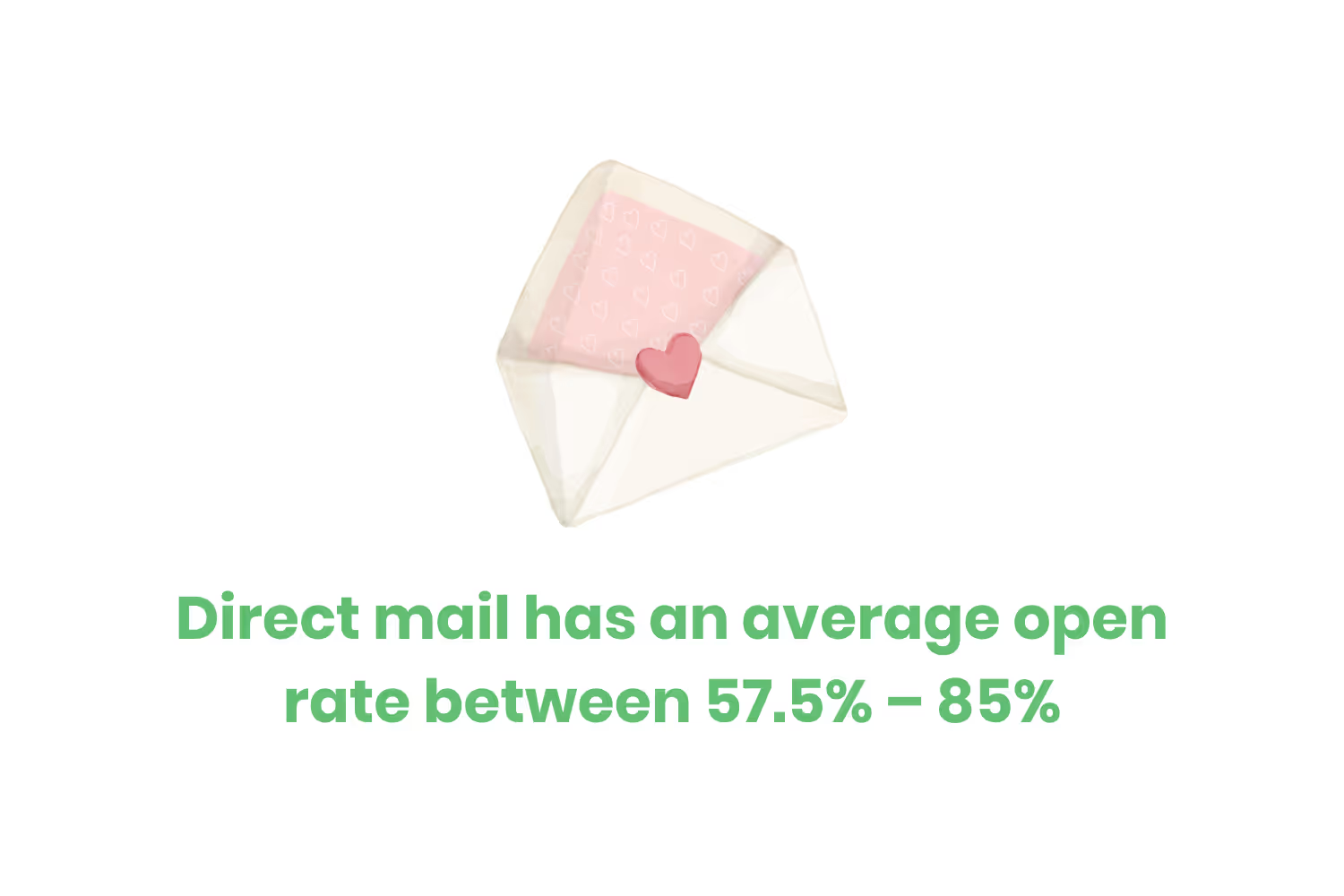
- 98% of consumers bring in their mail into the house the same day it’s delivered. (The Mail Moment)
- Of these, 72% of people bring it in “as soon as possible”.
- 77% report they sort through their mail “immediately”.
- Direct mail has an average open rate between 57.5% – 85%. (Report Linker)
- Direct mail has an average response rate of 2.7% - 4.4%. (Report Linker)
- In comparison, email only has a response rate of 0.6%.
- Over 90% of consumers browse through catalogs and keep them for an average of 7 days. (Harvard Business Review)
- Consumer response rates resulting from catalogs increased by 170% from 2004 to 2018. (Harvard Business Review)
- 56% of consumers say receiving mail is a “real pleasure”. (The Mail Moment)
- 55% say they “look forward” to discovering the mail they receive.
- Sending both digital and direct mail to Generation Z customers increases their overall response by 18-24%. (CDMG Inc)
- 84% of Gen Z customers reported they received direct mail with a QR code to interact with a brand online. (CDMG Inc)
- These QR codes lead to them watching a video, going to a sales-related landing page, or ordering by phone/action device.
- More than 70% of Gen X consumers believe that physical mail is more personal than online digital communications. (USPS)
- They report that they’re more likely to read promotional mail than emails.
- 57% of Boomers say they would be very disappointed if they stopped getting mail. (USPS)
- 45% of Gen X, 41% of millennials, and 37% of Gen Z say the same.
- 71% of Boomers report feeling that physical mail seems more personal than digital communications. (USPS)
- 67% of consumers feel mail is more personal than the Internet. (The Mail Moment)
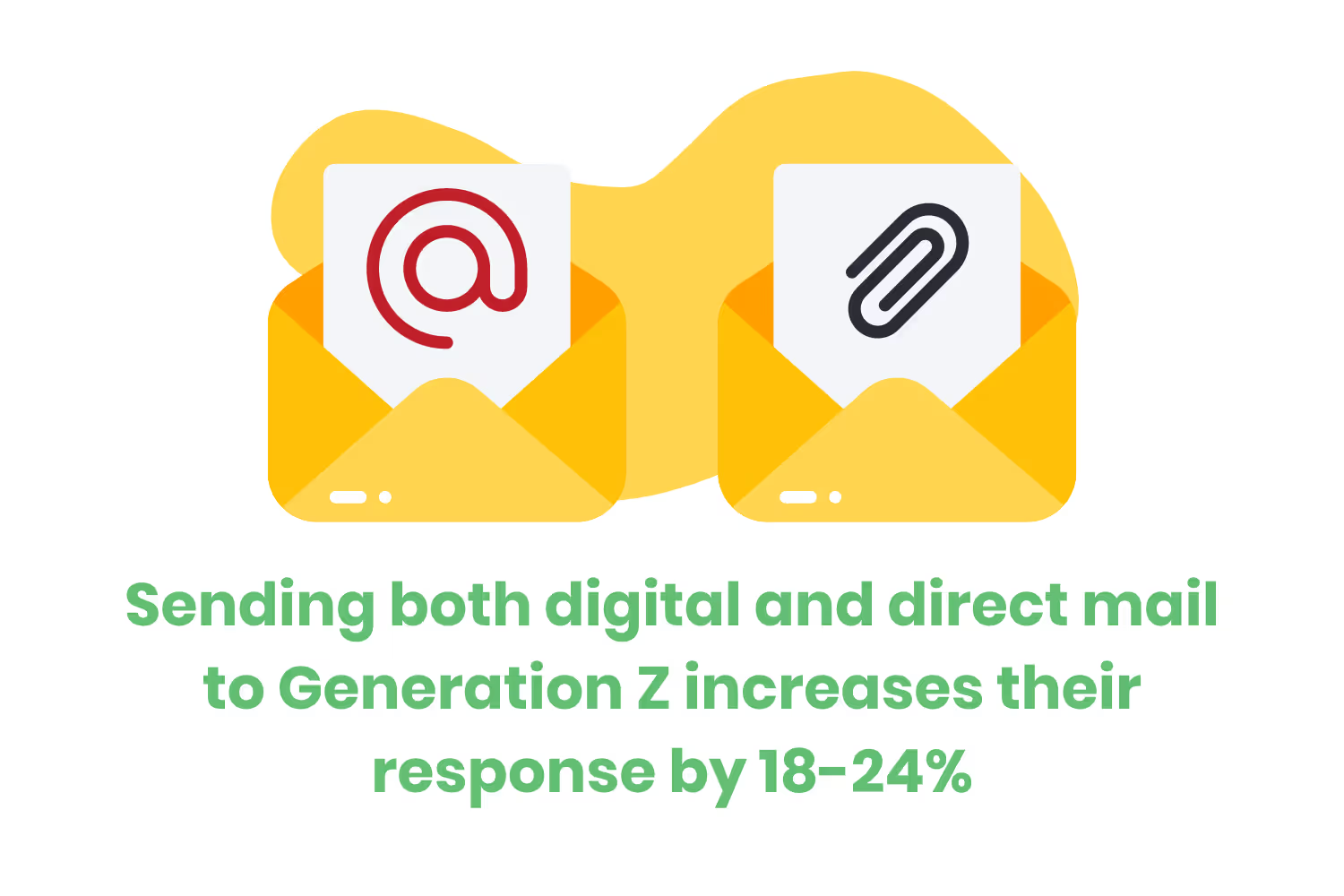
Companies with Their Mail
Business executives like measuring their return on investments (ROI). They want to see their marketing campaigns turn into sales, revenue, and profits.
Companies can easily test and measure the results of direct mail campaigns. It’s one of the reasons why they like using the post office in addition to more modern forms of digital marketing.
Even big companies like Google, Microsoft, and Apple use direct mailers. They know that mail attracts potential customers and turns into sales.
Most marketing teams don’t have access to huge advertising budgets. It would be nice, but it isn’t realistic.
But just because you’re a small or medium-sized company doesn’t mean you should give up on direct mail. Companies of all sizes should consider using direct mail to generate profits.
Below are some direct mail statistics explaining how companies are benefiting from sending advertisements to the mailbox.
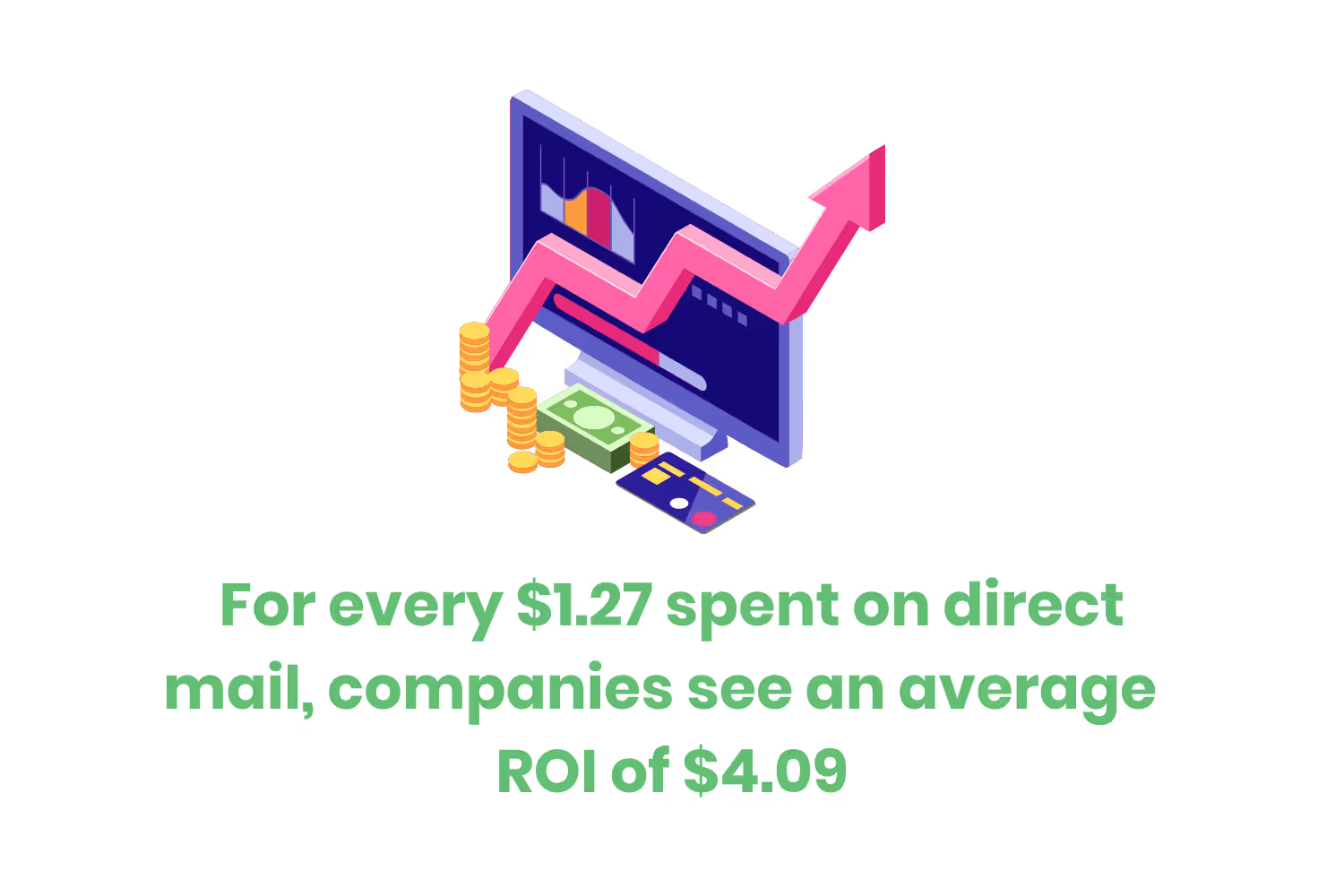
- For every $1.27 spent on direct mail, companies see an average ROI of $4.09. (Report Linker)
- 59% of brands reported having a “good” ROI and 7% had a “very good” ROI when their multichannel campaigns involved direct mail. (Marketing Charts)
- Companies saw a 49% increase in sales from consumers who received both emails and catalogs. (Harvard Business Review)
- Email-only campaigns see a measly 28% more in sales.
- Companies saw a 125% increase in consumer inquiries who received both emails and catalogs. (Harvard Business Review)
- Email-only campaigns see a measly 77% increase in consumer inquiries.
- Companies see a 12% increase in “good” or “very good” response rates in multichannel campaigns that use direct mail in the mix. (Marketing Charts)
- 69% of brands see a “good” response rate when using direct mail in their marketing mix.
- 8% of brands see a “very good” response rate. (Marketing Charts)
- In a survey looking at email campaigns between 2016 and 2020, 35% of the campaigns used direct mail and generated profitable ROI. (CDMG Inc)
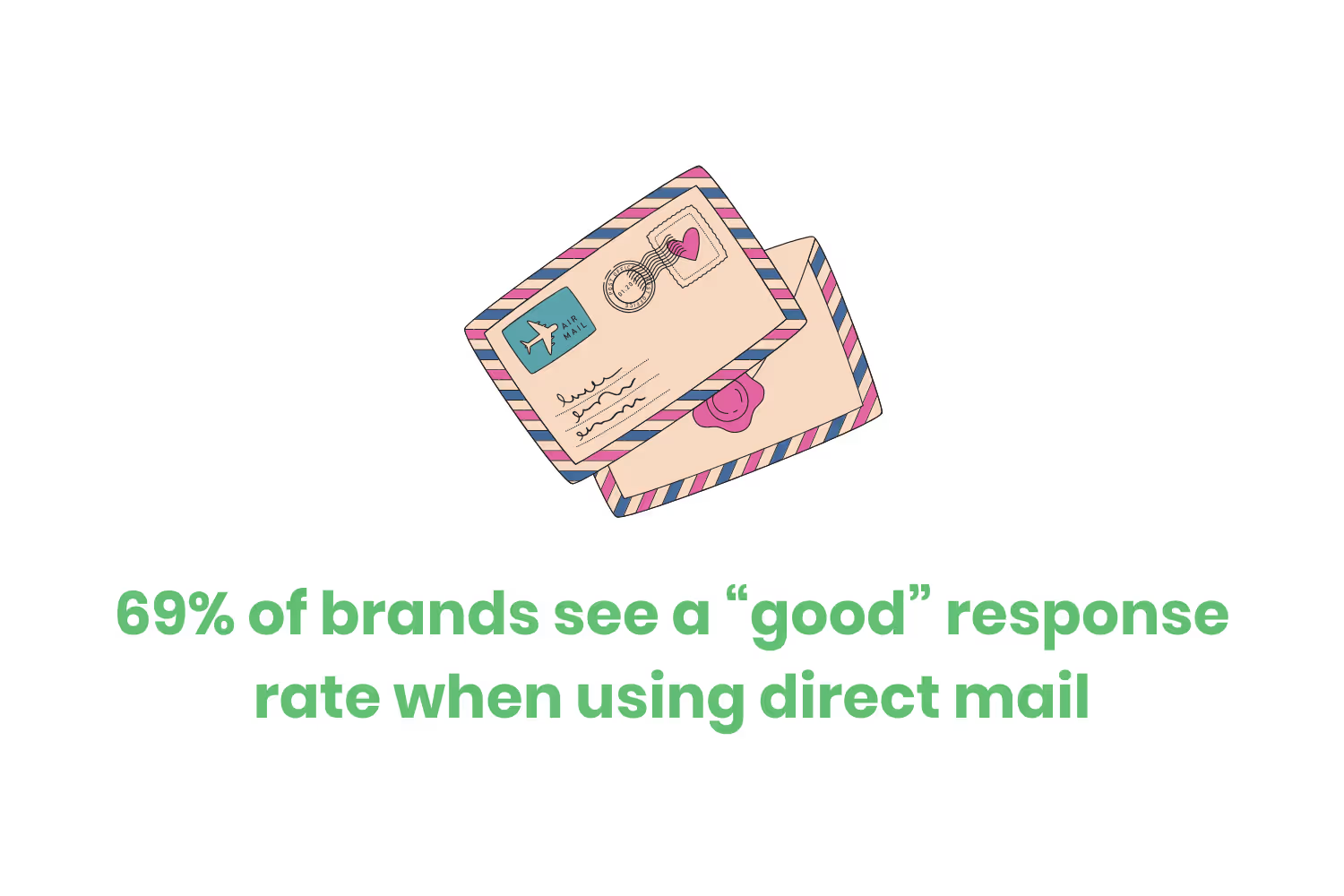
Conclusion
This blog post doesn’t exist to convince you that you should only use direct mail as your communication strategy. You shouldn’t give up on your digital and social media efforts to communicate with your target audience.
People indeed spend an obnoxious amount of time online. If you work a desk job, then you’re probably at a computer 8-10 hours a day! But just because people are spending so much time online doesn’t mean offline forms of communication are dead.
Direct mail is alive and well.
Consumers like receiving mail. They enjoy holding the envelope, postcard, newspaper, or magazine they received. They want to take a break from their screens. They want to feel a connection with the organization reaching out to them.
Businesses like sending mail too. When they combine direct mail campaigns with other types of campaigns, many businesses see positive ROI. In fact, they see more ROI than campaigns that only use email advertising methods.
Mail is far from dead. If anything, it has evolved to coexist and integrate with digital forms of communication. It complements digital messages. So, if you’re considering using direct mail to interact with your customers, the data shows that you should.
Emphasize your product's unique features or benefits to differentiate it from competitors
In nec dictum adipiscing pharetra enim etiam scelerisque dolor purus ipsum egestas cursus vulputate arcu egestas ut eu sed mollis consectetur mattis pharetra curabitur et maecenas in mattis fames consectetur ipsum quis risus mauris aliquam ornare nisl purus at ipsum nulla accumsan consectetur vestibulum suspendisse aliquam condimentum scelerisque lacinia pellentesque vestibulum condimentum turpis ligula pharetra dictum sapien facilisis sapien at sagittis et cursus congue.
- Pharetra curabitur et maecenas in mattis fames consectetur ipsum quis risus.
- Justo urna nisi auctor consequat consectetur dolor lectus blandit.
- Eget egestas volutpat lacinia vestibulum vitae mattis hendrerit.
- Ornare elit odio tellus orci bibendum dictum id sem congue enim amet diam.
Incorporate statistics or specific numbers to highlight the effectiveness or popularity of your offering
Convallis pellentesque ullamcorper sapien sed tristique fermentum proin amet quam tincidunt feugiat vitae neque quisque odio ut pellentesque ac mauris eget lectus. Pretium arcu turpis lacus sapien sit at eu sapien duis magna nunc nibh nam non ut nibh ultrices ultrices elementum egestas enim nisl sed cursus pellentesque sit dignissim enim euismod sit et convallis sed pelis viverra quam at nisl sit pharetra enim nisl nec vestibulum posuere in volutpat sed blandit neque risus.

Use time-sensitive language to encourage immediate action, such as "Limited Time Offer
Feugiat vitae neque quisque odio ut pellentesque ac mauris eget lectus. Pretium arcu turpis lacus sapien sit at eu sapien duis magna nunc nibh nam non ut nibh ultrices ultrices elementum egestas enim nisl sed cursus pellentesque sit dignissim enim euismod sit et convallis sed pelis viverra quam at nisl sit pharetra enim nisl nec vestibulum posuere in volutpat sed blandit neque risus.
- Pharetra curabitur et maecenas in mattis fames consectetur ipsum quis risus.
- Justo urna nisi auctor consequat consectetur dolor lectus blandit.
- Eget egestas volutpat lacinia vestibulum vitae mattis hendrerit.
- Ornare elit odio tellus orci bibendum dictum id sem congue enim amet diam.
Address customer pain points directly by showing how your product solves their problems
Feugiat vitae neque quisque odio ut pellentesque ac mauris eget lectus. Pretium arcu turpis lacus sapien sit at eu sapien duis magna nunc nibh nam non ut nibh ultrices ultrices elementum egestas enim nisl sed cursus pellentesque sit dignissim enim euismod sit et convallis sed pelis viverra quam at nisl sit pharetra enim nisl nec vestibulum posuere in volutpat sed blandit neque risus.
Vel etiam vel amet aenean eget in habitasse nunc duis tellus sem turpis risus aliquam ac volutpat tellus eu faucibus ullamcorper.
Tailor titles to your ideal customer segment using phrases like "Designed for Busy Professionals
Sed pretium id nibh id sit felis vitae volutpat volutpat adipiscing at sodales neque lectus mi phasellus commodo at elit suspendisse ornare faucibus lectus purus viverra in nec aliquet commodo et sed sed nisi tempor mi pellentesque arcu viverra pretium duis enim vulputate dignissim etiam ultrices vitae neque urna proin nibh diam turpis augue lacus.



![[ANSWERED] What is a Long-Term Care (LTC) Pharmacy](https://cdn.prod.website-files.com/67e2b8210878abcba6f91ae6/68d687806a075a1cf64659b0_WhatisLongTermCarePharmacy_925.avif)
